My Cultural Diet for January 2024: Reacher, Brandon Sanderson, Monarch, Asteroid City

In order to better track my various cultural experiences (e.g., movies, TV shows, books, restaurants), I’ve created the Cultural Diet. Think of it as my own personal Goodreads, Letterboxd, and Yelp, all rolled into one (more info here). Every month, I recap everything that I watched, read, etc., in the previous month.
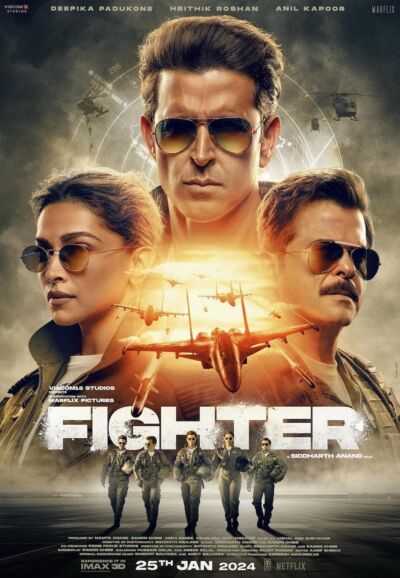
I really enjoyed Siddharth Anand’s War, starring Hrithik Roshan; with its crazy action sequences and wild twists, it felt like a Bollywood version of a Mission: Impossible movie. So I was excited to see the two reunite for Fighter, which looked like it’d be the Bollywood Top Gun. Alas, Fighter is nowhere near as enjoyable as War. Or Top Gun, for that matter. Given that it’s an Indian film, wild tonal shifts are to be expected. Even so, Fighter puts you in a tailspin as it veers between war carnage and brutal terrorism, goofy “buddy film” hijinks, overwrought melodrama, and smoldering romance, with the requisite dance numbers thrown in. (For the record, nobody, and I mean nobody, smolders like Hrithik Roshan, especially when he’s walking in slow motion, which constitutes approximately a fourth of the nearly three-hour film.) What makes Fighter especially eyeroll-inducing, though, is that nearly all of its scenes are slathered in jingoism and over-the-top nationalism that just suck the fun right out of the film. Meanwhile, the surprisingly shoddy CGI and visual effects render the many dogfighting scenes more silly than thrilling.
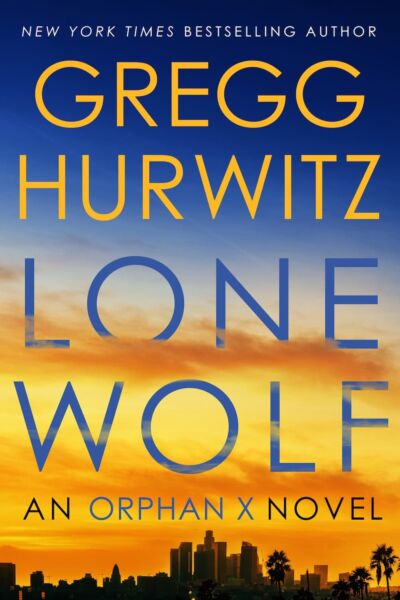
The arrival of this one took me by surprise, simply because the previous Orphan X novel — The Last Orphan — seemed to end things on a rather definite note. (That, and it was literally titled The Last Orphan.) Would that it had been the final Orphan X novel. Lone Wolf suffers from the same flaws as its predecessor, namely that it spends so many pages diving into the protagonist’s trauma, existential angst, psychological baggage, and (worst of all) experiences with HOA politics, that it becomes surprisingly and frustratingly inert. After all, this is a series of novels about a super-deadly assassin who now loans out his skills to desperate people in desperate situations while trying to stay one step ahead of the people who trained him. Ironically, the more humanity that it protagonist seems to reclaim, the less interesting he becomes as a character.
I can’t remember where I first hear about Beef Wellington, but the idea’s fascinated me ever since. A delicious fillet wrapped in prosciutto and a paste of mushrooms, shallots, and various seasonings, and baked inside a delicate pastry crust? What’s not to like about that. I finally got to enjoy one courtesy of my lovely wife, and it did not disappoint. It’s a wonderful dish that just feels fancy, the perfect sort of thing for special occasions, like family holiday meals.
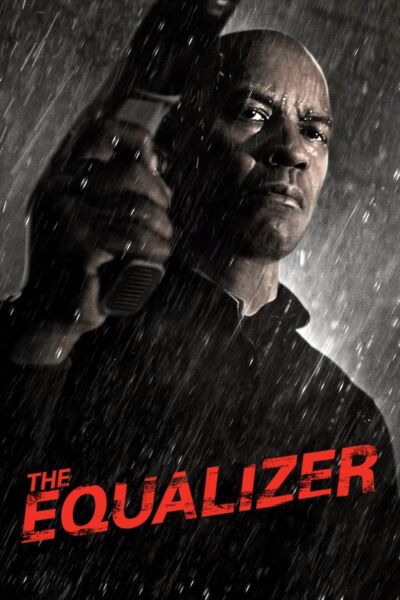
The only reason this film works as well as it does is because of Denzel Washington. He brings the requisite amounts of gravitas and screen presence to make you believe in his haunted ex-super-deadly-guy who now seeks redemption by taking out a bunch of Russian gangsters in violent, blood-soaked fashion. Of course, being an Antoine Fuqua film, The Equalizer occasionally dips into hyper-stylized, CGI-enhanced silliness — which is a shame, because I much preferred the slow, seemingly mundane burn of the film’s first act — but even then, it remains eminently watchable because of Denzel. No one else could’ve pulled it off, of that I’m convinced.

It was still satisfying to watch Reacher dispatch a bunch of really slimy bad guys — in this case, some corrupt cops hoping to make millions by selling advanced weapons to terrorists — in all kinds of inventive and violent ways, but I didn’t enjoy this as much as Reacher’s first season. I missed that season’s dark sense of humor (e.g., Reacher beating some morals into a dog’s negligent owner, Reacher dropping one-liners while dispatching bad guys). Without that to add some levity and self-awareness, season two often felt rather sullen and morose as it dove more into Reacher’s military past and the fates of some of his comrades. Also, the result was a less likable Reacher. Granted, he’s a big, beefy dude who prefers to ignore the law and let his fists and guns do the talking, but in season one, such lone wolf activities came with a wink at the audience. Not so much with season two, to its detriment.
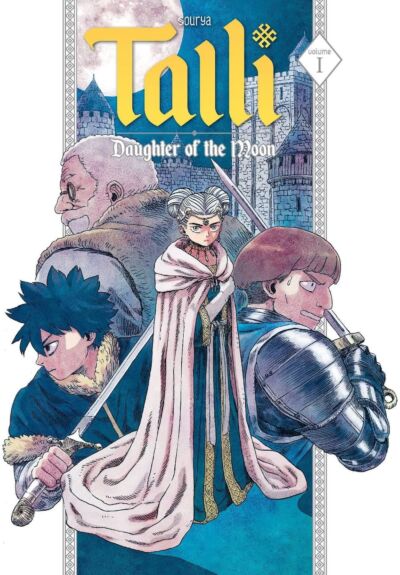
Author Sourya may be French-Laotian, but Talli, Daughter of the Moon is heavily influenced by Japanese manga, from the character designs to the tonal shifts. Which isn’t necessarily a bad thing, not in this case. The fantasy tale of a young noblewoman on the run and trying to better understand her mysterious powers — powers that could spell ruin for the entire kingdom — hits plenty of tropes, but Sourya’s storytelling and artwork keeps things fresh and inviting.
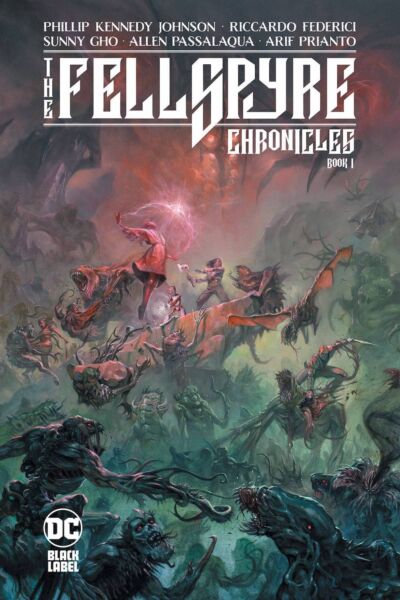
I feel like the title alone — The Fellspyre Chronicles — tells you everything you can expect here. That is, epic high fantasy replete with wizards, elves, and barbarians. (It should come as no surprise that the back of this volume contains a bunch of 5E-compatible resources inspired by the comic’s massive world, including monsters, races, maps, and character classes.) Phillip K. Johnson’s world-building is truly impressive, and Riccardo Federici’s artwork is consistently rich and stunning. So why not a higher score? The story itself — a group of adventurers trying save their world from an otherworldly evil while also atoning for the sins of their past — is often unremittingly grim and unpleasant, and with few exceptions, the characters are hardly a likable or sympathetic bunch. As impressed as I was by Johnson’s sense of scope, I often found it hard to actually care about the “heroes” venturing forth into his elaborate fantasy world.
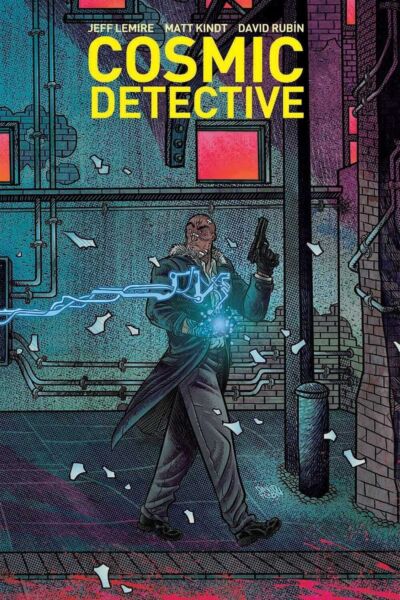
A detective’s latest case becomes something much more than a simple murder mystery when the victim turns out to be a god. Good thing he’s a… wait for it… cosmic detective. Even so, he may still be ill-prepared for the revelations that his investigation uncovers, revelations that could challenge everything he knows about existence. Given that Cosmic Detective was co-written by Jeff Lemire (Black Hammer, Gideon Falls), you can expect a fairly downbeat story. Although it doesn’t feature any eldritch entities, the cosmicism on display in Cosmic Detective’s pages — as rendered by David Rubin’s mind-bending artwork (which pays tribute to Jack Kirby) — is definitely Lovecraftian in spirit, and reminiscent of Caitlín R. Kiernan’s Agents of Dreamland. Interestingly enough, my church is currently studying the Book of Ecclesiastes, and Qoheleth’s existentialism actually jibes quite nicely with Lemire and Matt Kindt’s (Dept. H, MIND MGMT) story and helped me consider its themes in a new light. Even so, best to avoid Cosmic Detective unless you’re up for pondering the potential meaninglessness of existence.
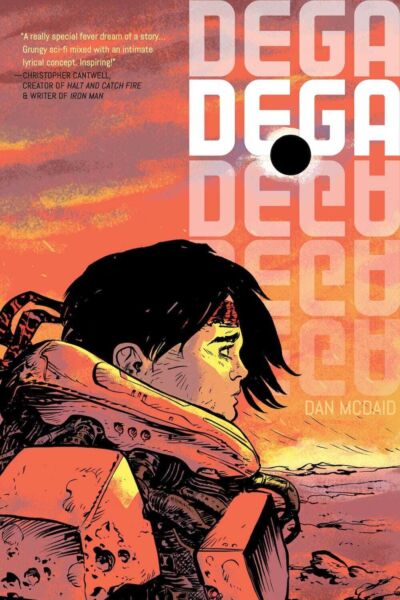
An astronaut stranded on an apparently deserted planet with her robot companion makes a fascinating discovery even as she must battle alien marauders and the planet’s bizarre phenomena in this first graphic novel from Dan McDaid (Doctor Who, Firefly, Judge Dredd). At the risk of damning it with faint praise, I liked Dega more than I didn’t, but it’s very short and slight. If you enjoy survival tales and want something to help pass the afternoon, then Dega will be right up your alley.

Mamoru Oshii is best known for directing classic anime films like Urusei Yatsura 2: Beautiful Dreamer, Ghost in the Shell, and the Patlabor movies, but he’s also taken his hand at live-action over the years. I loved the Matrix-y Avalon years ago, and with its baroque, CGI-heavy visuals, Garm Wars: The Last Druid is cut from the same stylistic cloth. Which means that it has some occasionally stunning visuals even as it suffers from a bleary, washed out look that makes it look like one long Final Fantasy cutscene. The story’s an interesting-if-convoluted blend of Celtic mythology, sci-fi, and post-apocalyptic cyberpunk, but nobody — not even Lance Henriksen — is going to win any awards for their performances. (Kenji Kawai’s score, on the other hand, is lovely.) And after about 90 minutes, the film just sort of peters out, which is ironic given the epic final imagery. In the end, this one’s really just for Oshii diehards.
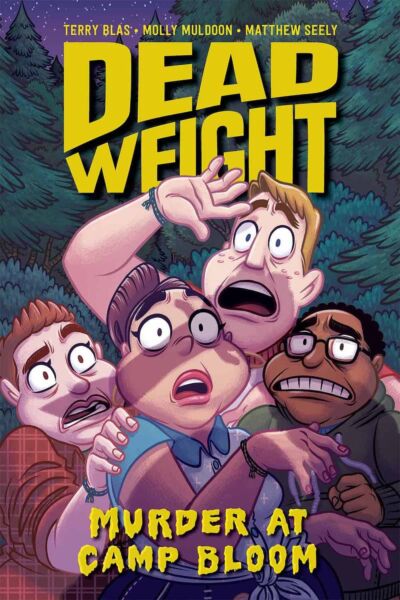
I checked this one out from the library on a whim simply because the premise was intriguing: a group of kids at a summer weight-loss camp become amateur sleuths after witnessing the gruesome murder of a beloved camp counselor. And as they try to determine the killer’s identity, they uncover shocking secrets lurking just beneath Camp Bloom’s seemingly idyllic surface. It plays out a bit like a Scooby-Doo episode, albeit with some queer themes and discussions of body image. In the end, Dead Weight is just OK. Of the four main characters, I only found one really interesting (the tech-obsessed Black nerd who struggles with his family’s health history), and when the killer’s identity and motivations are finally revealed, they’re rather mundane and underwhelming. I bumped up my score a bit because Dead Weight’s heart is clearly in the right place, but I was also left wanting more.
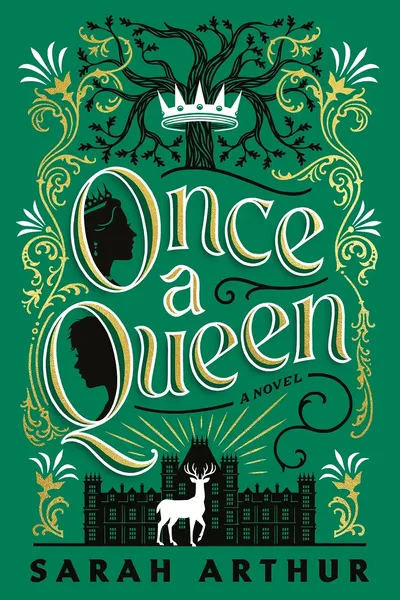
After finishing Sarah Arthur’s Once a Queen and then discovering that she co-founded a festival devoted to C. S. Lewis, my first thought was, “Yep, that tracks.” And no, that’s not a slight. But Arthur’s novel — in which a girl named Eva discovers evidence that her grandmother was a queen in another world, the very same world chronicled in Eva’s favorite book — is clearly inspired by Lewis’s beloved Narnian stories. But it’s inspired in the best ways, and no mere rip-off. Arthur’s prose is often quite beautiful and even moving at times, and she weaves a story filled with delight and imagination as well as sorrow, tragedy, and heartache. (Because, as we all know, the best fairy tales often have darker, sadder undercurrents.) Once a Queen is a bit cluttered — I confess, it was occasionally difficult to keep track of all of the characters’ familial connections — and Eva’s naïveté and stubbornness is as frustrating as it is endearing (as is often the case with fourteen-year-olds). But the novel is also deeply earnest in its insistence, à la Lewis, of the importance and power of myths and fairy tales, and their ability to convey deeper truths. Perhaps the highest compliment I can give Once a Queen is that upon finishing it, I immediately began thinking of all of the youngsters who should read it when it’s released later this month, starting with my own kids. (Thanks to NetGalley for the advance review copy.)
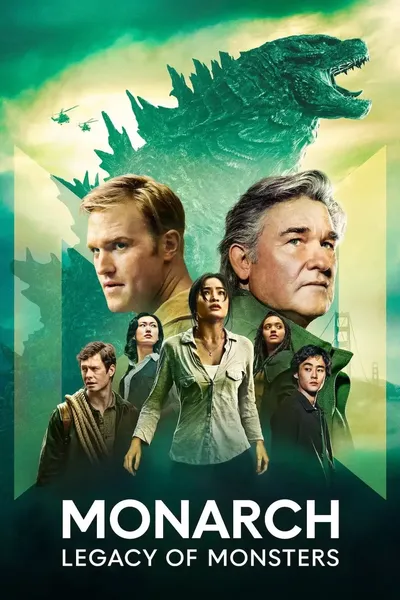
I feel like Monarch wants to have it both ways. On the one hand, it wants to be an intriguing Lost-esque mystery about the origins of a super-secret agency tasked with protecting humanity from giant monsters. And on the other hand, it wants to be a thrilling series where the threat/promise of those same giant monsters attacking humanity constantly looms in the background. As a result, it ends up being neither. But not for lack of trying. As with Foundation, Apple has clearly spared no expanse for Monarch; the effects are easily on par with any Hollywood blockbuster. And the series boasts some strong performances, particularly from Wyatt and Kurt Russell (who play the same character in different time periods) as well as Mari Yamamoto as a brilliant scientist dedicated to better understanding creatures like Godzilla. (It was also neat seeing The Expanse’s Dominique Tipper in a quasi-villainous role.) Given my fondness for Godzilla, though, I confess I don’t fully understand the point of Monarch. Sure, it looks great, but does it really add anything to Legendary Pictures’ MonsterVerse? I’m not sure.
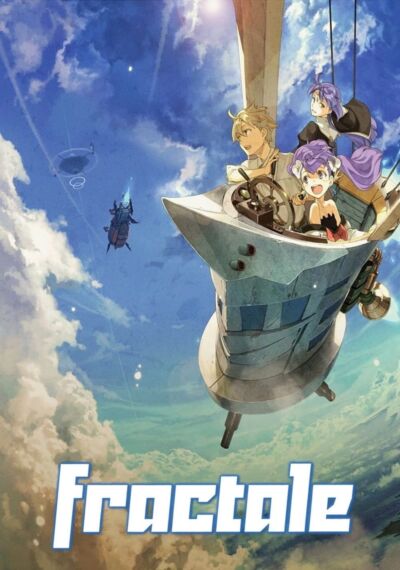
I started watching Fractale way back in the day on Hulu but never finished it. Still, something about it stuck in my memory. So when Crunchyroll offered the entire series on Blu-ray for $5, I figured “Why not?” and bought a copy. Now I wish I would’ve saved my money. Fractale isn’t terrible, but its story — a young boy living amongst virtual avatars gets caught up in a quasi-religious war over a global VR network — never quite delivers on its (bizarre) premise. Which serves only to highlight its other flaws: fan service; uneven tone; inconsistent artwork and animation (different episodes look like they’re animated by different teams, and even in the same episode, characters will look wildly different between scenes); and a gratuitous subplot involving child sexual assault that feels like it’s only there to make the primary antagonist even more villainous. Combine all those things, and it’s hard to shake the impression that writer/director Yutaka Yamamoto’s sense of ambition simply exceeded his ability to craft a compelling story.
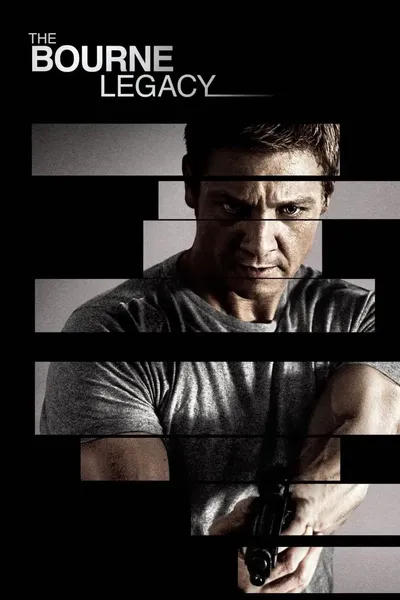
After 2007’s The Bourne Ultimatum, Matt Damon refused to make another Bourne movie without director Paul Greengrass, so Tony Gilroy — who wrote the first three Bourne movies — hopped into the director’s chair and enlisted Jeremy Renner and Rachel Weisz, with middling results. That’s no slight on Renner and Weisz, who do the best they can with an inert storyline that verges into the realm of sci-fi with its talk of genetically modified super-soldiers. There are flashes of a more interesting film here and there, and Renner and Weisz share some nice moments. In the end, however, The Bourne Legacy is just a pale imitation of the films that preceded it, from the hectic, rapid-fire editing and elaborate chase sequences to the ever-increasing array of shadowy government projects with boring-yet-ominous codenames.
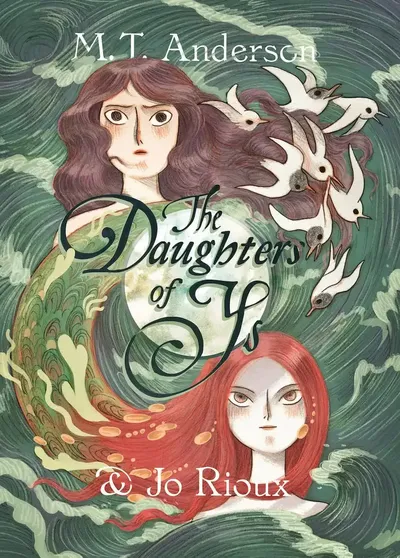
Inspired by classic Breton folk tales, The Daughters of Ys spins a dark tale about two sisters driven apart by grief over their mother’s death — one heads off into the wilderness while the other becomes embroiled in court politics — and the roles they play in the fate of the doomed city of Ys. I’m a sucker for well-done riffs on classic stories; while The Daughters of Ys is nothing revelatory, it’s still a very enjoyable read for fans of somber fairy tales. M. T. Anderson’s prose has a Gaiman-esque quality (not a bad thing!) while Jo Rioux’s painterly images evoke elements of Celtic artwork.

I played this on a whim and was pleasantly surprised. Some obvious comparisons can be made to the Portal games, but Superliminal’s entire vibe is much more surreal, from the puzzles themselves to the graphics, controls, and especially Matt Christensen’s muzak soundtrack. Which makes sense given the game’s objective is to try and find your way through a dream therapy program that’s run amok. I’m not ashamed to admit that I had to ask my teenager for help a couple of times. (The moon puzzle really threw me.) That said, the game’s conclusion was a bit anticlimactic. There’s a moment where it seemed like Superliminal is going to veer off into darker, Twin Peaks-esque territory, only to pull back. In hindsight, I wish, perhaps, that the game had continued down that path. Regardless, Superliminal is still a nice way to spend a few hours, though don’t be surprised if the game’s illusions and use of forced perspective give you a little vertigo every now and then.
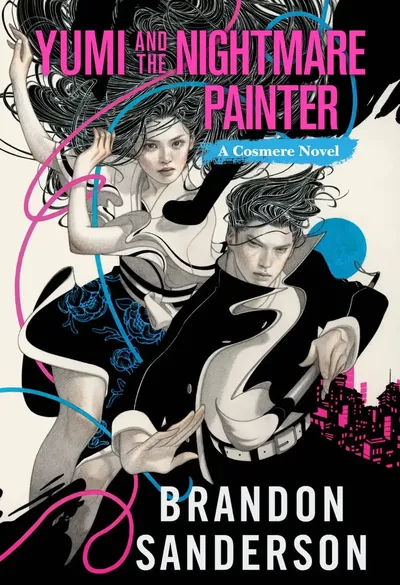
If you haven’t read any of Brandon Sanderson’s other novels set in his extensive (some might say, convoluted) Cosmere mythology, have no fear. Sure, it’s narrated by Hoid and references cognitive shadows, cryptics, lightweaving, and whatnot, but Yumi and the Nightmare Painter’s story about a man and woman from different worlds who suddenly find themselves inhabiting each other’s bodies is largely self-contained. It’s also a bit on the slight side, which makes sense given its origins as a secret project for Sanderson’s 2022 Kickstarter campaign. The novel worked best for me when I remembered that it’s basically Sanderson riffing on a Final Fantasy game; the storyline, characters, magic, technology, etc., all feel very much like something out of a JRPG. If JRPGs aren’t your thing, though, then you might have a harder time with it.
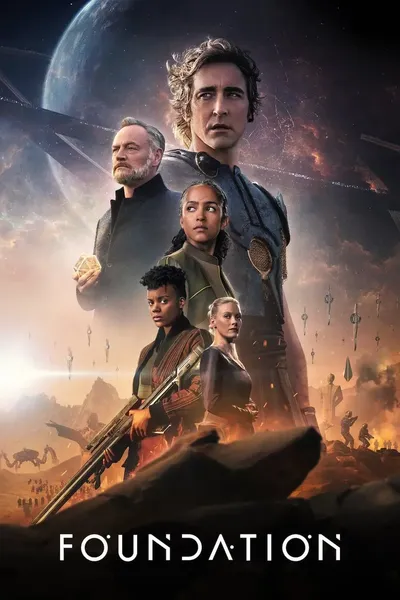
In my review of Foundation’s first season, I wrote that it tried to fit way too much into just ten episodes. That’s still my biggest complaint with the second season. To be sure, Foundation remains eminently watchable — Apple has clearly spared no expense — and I’m frequently in awe of its world building, from the various space ships and fantastical technology (e.g., Hari Seldon’s vault) to the religious movements and shifting political allegiances. But I still felt like I’d somehow missed one vital episode that tied all of various narrative strands together. Which is a shame, because there were some individual stories that I really enjoyed, like the various revelations about Demerzel as well as the push and pull between Bel Riose and his husband Glawen Curr. (Glawen, by the way, is one of my favorite characters from 2023.) But even with my aforementioned criticism, I’ll still tune in for season three; getting to watch space opera this ambitious on the small screen is a real treat.

At the risk of sounding like a lazy critic, is Asteroid City the most Wes Anderson-y thing that Wes Anderson has ever done? With its story within a story within a story structure, heavily affected performances, carefully controlled camerawork, and production design that pushes Anderson’s trademark style to the nth degree, I think all signs point to “Yes.” As with most Anderson movies, there’s a bit more going on beneath the surface; for starters, Asteroid City tries to raise questions about the extent to which fictional narratives can capture the elusive nature of truth. But it does so in such a stilted and affected manner that I question its efficacy. That said, I love the film’s production design and cinematography, which makes you feel like you’ve been dropped down inside a sun-bleached vintage postcard from the 1950s. And I’d probably watch an entire film about Montana and his cowboy band.
